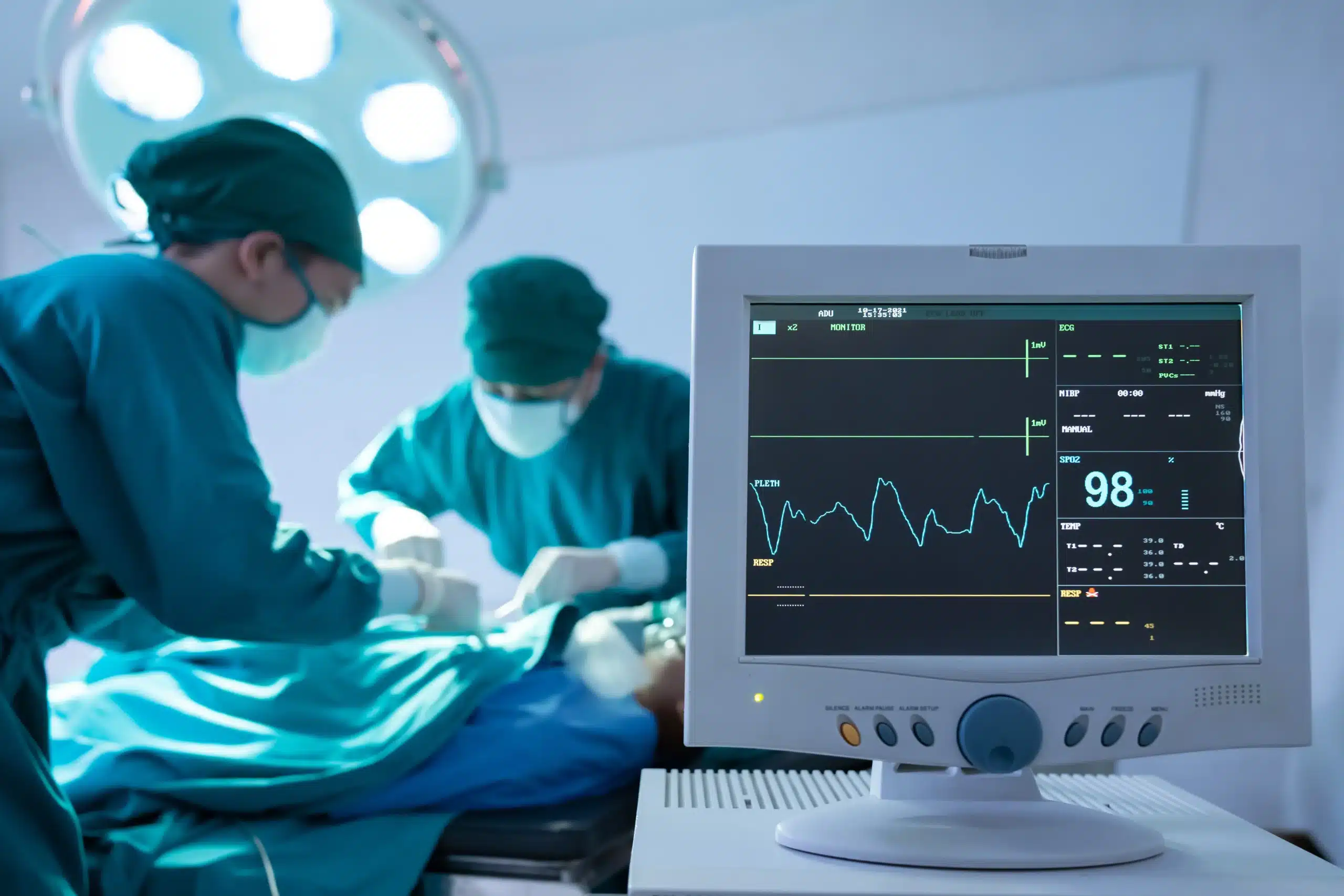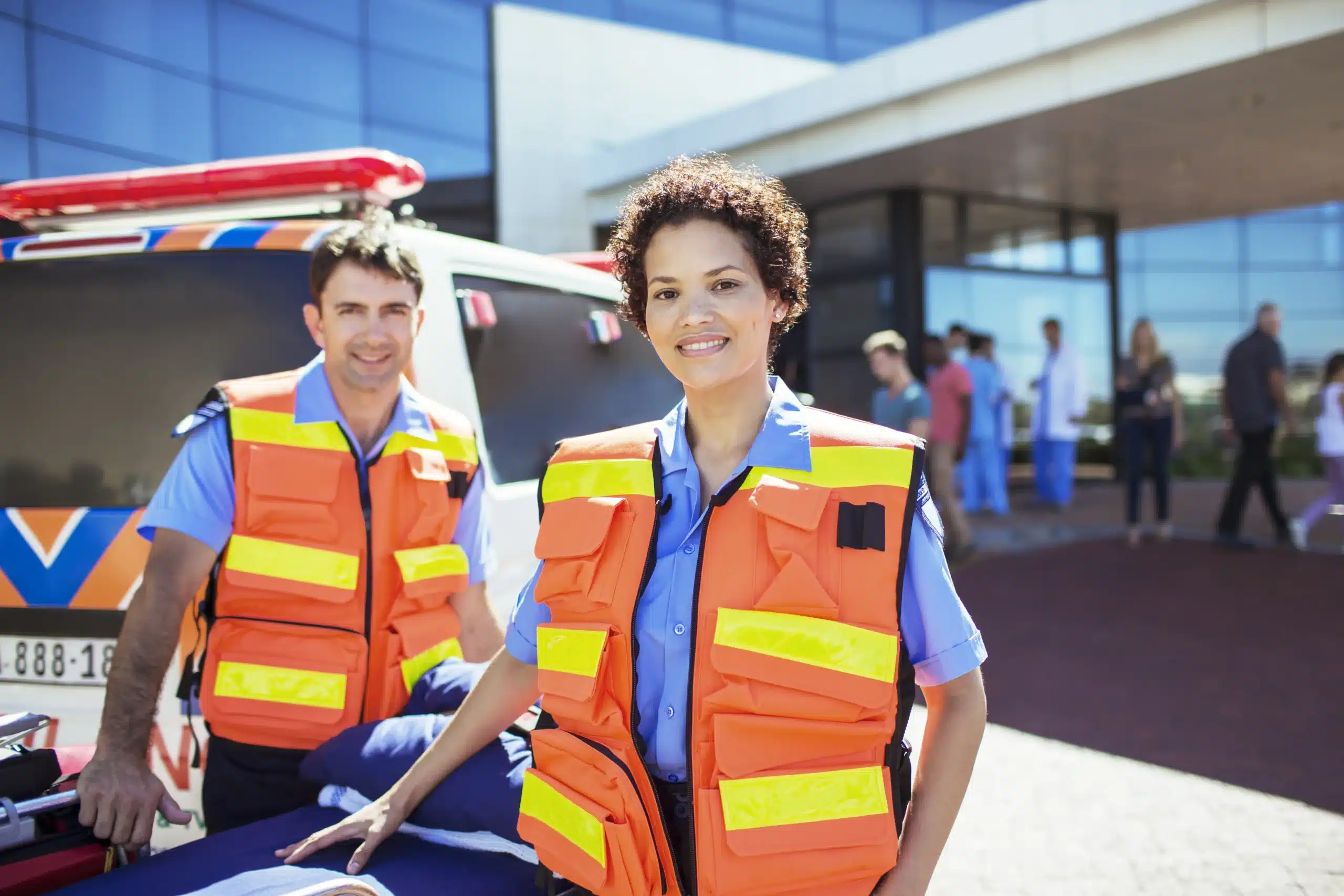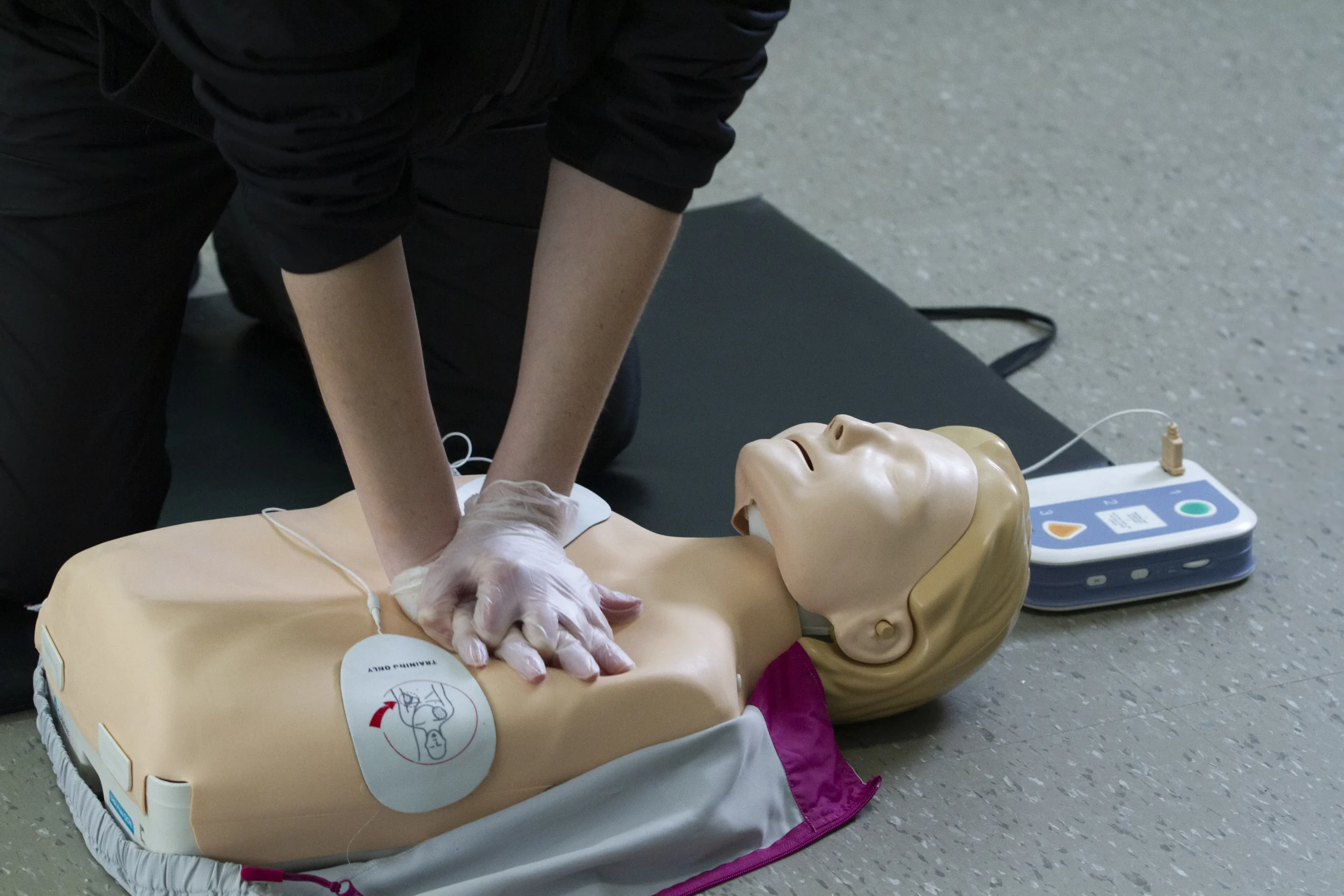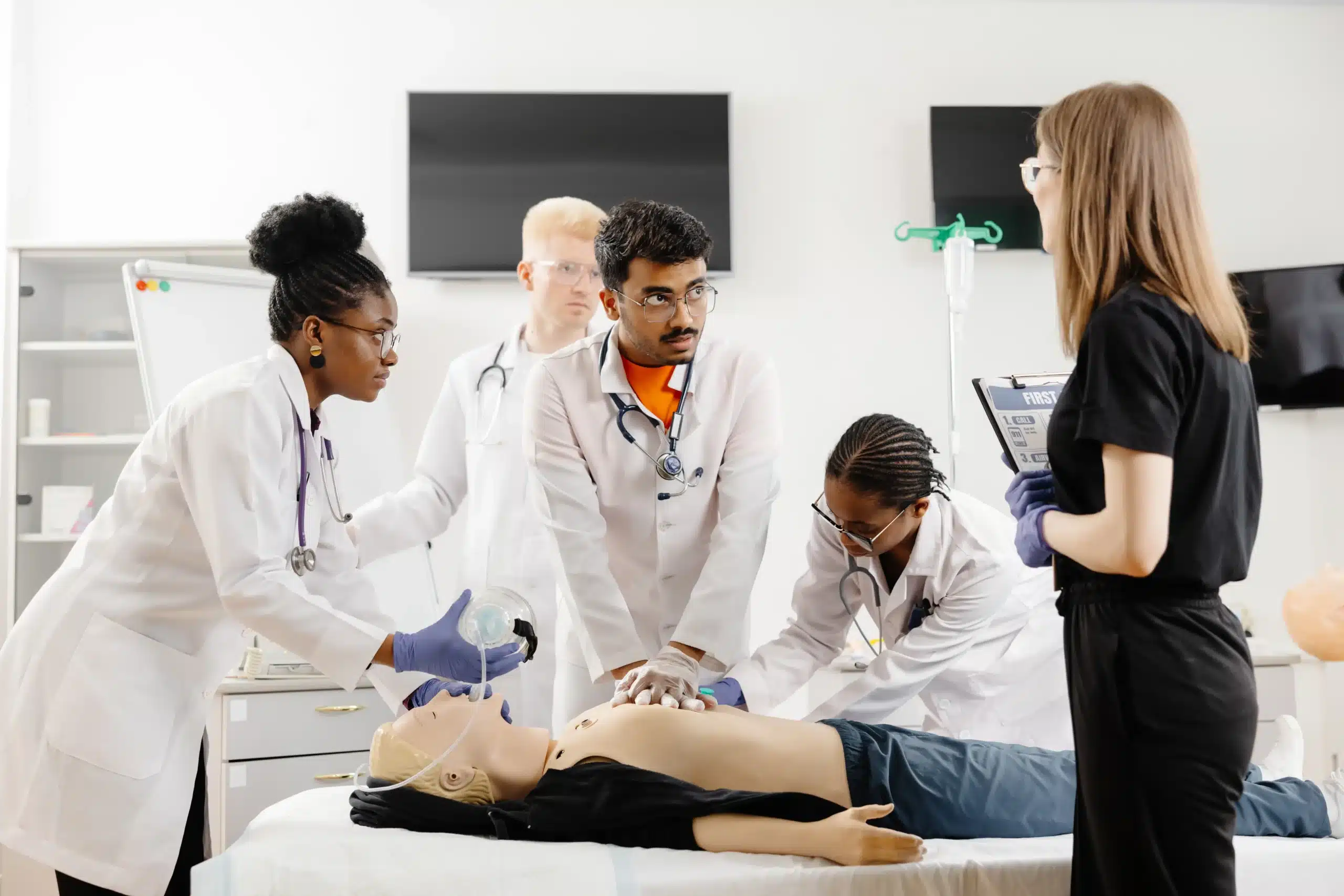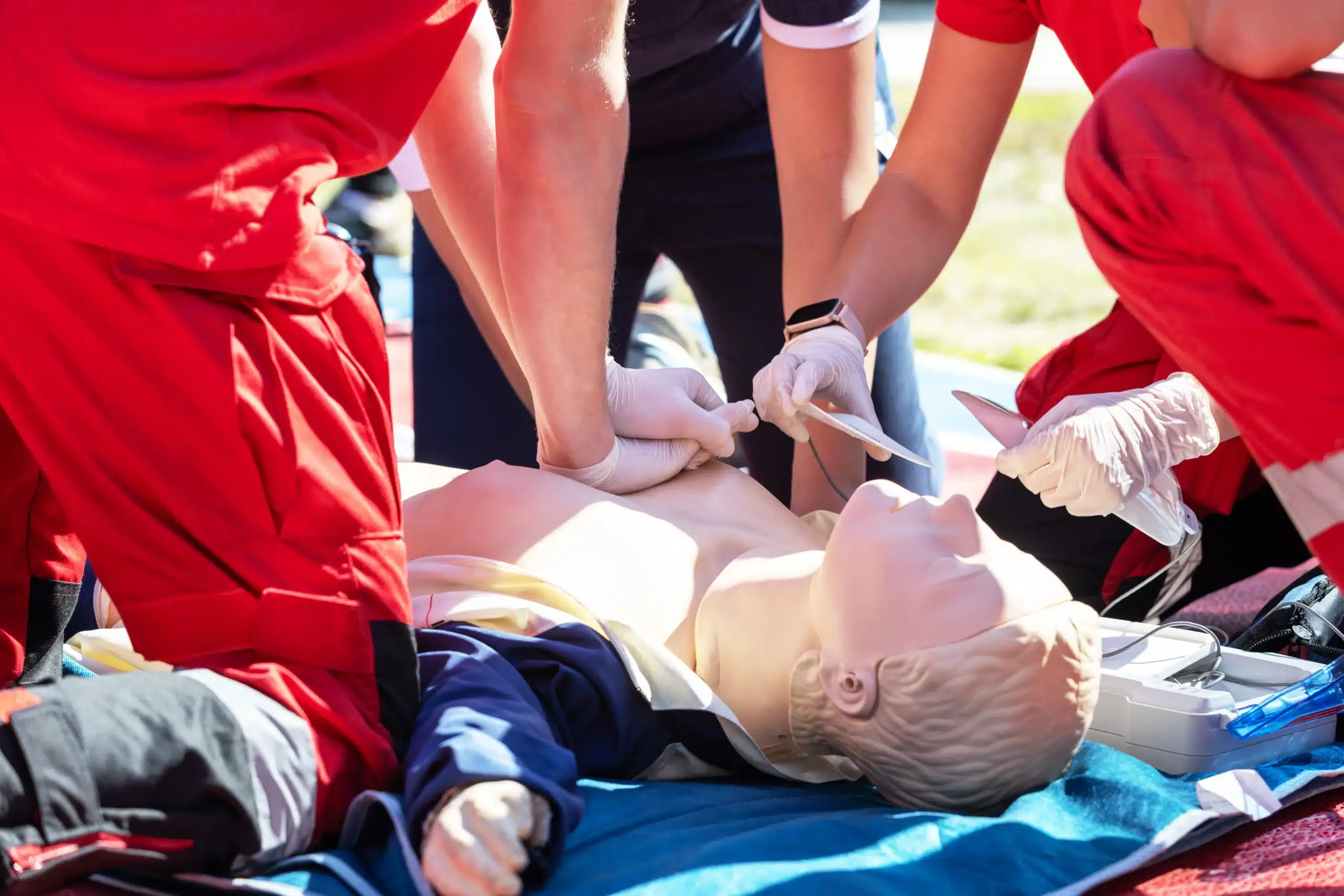Okay, so you’re searching for “bls training near me”—awesome! Whether you’re a healthcare provider, a concerned parent, or just someone who wants to be prepared for emergencies, getting BLS certified is a huge step. But where do you even begin? This post is your go-to guide for finding the right BLS training program in your area. We’ll cover everything from the essential skills you’ll learn to the different training formats available. Plus, we’ll give you some insider tips on choosing a program that fits your learning style and budget. Let’s make finding “bls training near me” a little less daunting and a lot more empowering.
Key Takeaways
- BLS certification empowers you to act in emergencies: Learning essential skills like CPR and AED use prepares you to respond confidently to life-threatening situations, whether you work in healthcare or not.
- Choosing the right BLS program involves key considerations: Think about factors like program accreditation, instructor qualifications, course content, and schedule flexibility to find the best fit for your learning style and needs.
- Obtaining BLS certification is accessible and affordable: Many training providers offer various course formats and price points, making it easier than ever to gain this valuable life-saving skill. Look for options like group discounts and convenient locations.
What is BLS Training and Why is it Important?
BLS stands for Basic Life Support. It’s the level of medical care used for victims of life-threatening illnesses or injuries until they can be transported to a hospital or receive more advanced care. First responders, healthcare providers, and public safety professionals often perform BLS, but having these skills can benefit anyone. BLS training prepares you to respond effectively during emergencies like heart attacks, strokes, choking, and near-drowning incidents.
Key BLS Skills
BLS certification courses teach a range of essential, life-saving skills. You’ll learn how to perform high-quality CPR for adults, children, and infants, including using an AED (automated external defibrillator). Airway management techniques are also covered, showing you how to open a patient’s airway and provide rescue breaths. BLS training also emphasizes recognizing the signs of a cardiac arrest or other life-threatening conditions. Our BLS certification course covers all these skills, preparing you to respond confidently in various emergency situations.
Why BLS Matters for Healthcare Providers and Others
Healthcare professionals, including doctors, nurses, and EMTs, often require BLS certification for employment. It confirms they possess the fundamental skills to handle critical situations and provide immediate care. But BLS training isn’t just for medical professionals. Research shows effective bystander CPR can dramatically improve survival rates after cardiac arrest, so anyone can benefit from learning these skills. Even outside the medical field, BLS training empowers you to act in emergencies, whether at home, work, or in your community. Plus, it increases your confidence and willingness to step up when needed. Check out our low price guarantee to learn more.
How to Find Great BLS Training Near You
Finding the right BLS training program can feel overwhelming, but it doesn’t have to be. Here’s a breakdown of different avenues you can explore:
Safety Training Seminars
For comprehensive BLS certification and other AHA courses like ACLS, PALS, and First-Aid, see what Safety Training Seminars offers. As a woman-owned AHA Training Center, they provide high-quality instruction. They serve Sacramento, Roseville, and Rocklin, making them a convenient local option. They also offer a low price guarantee.
American Red Cross
The American Red Cross is a well-established provider of BLS certification and recertification courses. Designed for healthcare providers and first responders, they offer in-person and blended learning options. This flexibility can be helpful if you’re balancing work and other commitments.
American Heart Association
While the AHA doesn’t directly conduct training, they certify training centers. If you’re looking for an AHA-aligned course, ensure the training center you choose has the proper AHA certification, like the programs at Safety Training Seminars. This ensures your certification meets the AHA’s standards. They offer various certifications, including CPR, BLS, ACLS, PALS, NRP, EMSA Child Care Health & Safety, and First-aid. Consider exploring their EMSA Child Care Health & Safety and RQI classes.
Local Hospitals and Medical Centers
Consider checking if local hospitals and medical centers offer BLS training. They often have programs for their staff and sometimes open these to the public. Training at a hospital can be a great way to learn from experienced professionals. Check the websites of hospitals in your area or contact them directly.
Community Colleges
Community colleges frequently offer BLS training within their health sciences programs. These courses are a good option for students pursuing healthcare careers and often include hands-on practice. Check the college’s website or contact their health sciences department for more information.
Choosing the Right BLS Training Format
Finding the right BLS training format depends on your learning style, schedule, and preferences. Let’s break down the most common options: in-person, online, and hybrid courses. Each has its own advantages, so consider what works best for you.
In-Person Classes: Hands-on Practice and Instant Feedback
In-person BLS training gives you the chance to practice skills like CPR and using an AED in real-time. You’ll get immediate feedback from your instructor, which can be incredibly helpful for mastering these techniques. This format is great for people who learn best through hands-on experiences and direct interaction. Plus, practicing with other students can build your confidence and teamwork skills. If you prefer a more traditional classroom setting and thrive in a group environment, in-person training might be the perfect fit. Check out our in-person BLS course to learn more.
Online Courses: Flexibility and Self-Paced Learning
Online BLS courses offer a flexible way to learn, allowing you to study at your own pace and on your own schedule. This is ideal if you have a busy lifestyle or limited availability. You can access the course materials anytime, anywhere, making it easy to fit training into your life. Online learning often involves interactive modules, videos, and quizzes to keep you engaged and help you absorb the information effectively. If you’re a self-directed learner and prefer studying independently, an online course could be a great option. This BLS course is a good example of a fully online option.
Hybrid Options: Combining Online Theory with In-Person Skills
Hybrid BLS courses combine the best of both worlds. You’ll complete the theoretical part of the course online, at your own convenience. Then, you’ll attend an in-person skills session to practice what you’ve learned with a certified instructor. This approach offers flexibility while still providing the essential hands-on training component. The American Red Cross offers blended learning options, allowing you to learn the theory online and then demonstrate your skills in person. This format is a great choice if you want the convenience of online learning but also value the benefits of hands-on practice and instructor guidance. Bay Area CPR also offers group discounts for this blended learning format.
BLS Training: Costs and Time Commitment
So you’re ready to get your BLS certification—fantastic! Now, let’s talk about the practicalities: cost and time. Understanding these factors will help you plan and choose the right BLS course for your needs.
Average BLS Course Costs
BLS course costs can vary depending on the training provider, location, and what’s included. Here in Sacramento, you can find options ranging from around $75 to $150. At Safety Training Seminars, our BLS certification courses start at $75, and we even have a low price guarantee. We believe that high-quality training should be accessible to everyone. It’s always a good idea to compare prices and check if materials and certification fees are included upfront.
Course Length and Certification Validity
BLS courses are designed to be efficient and effective, typically lasting between four and six hours. Our BLS courses at Safety Training Seminars are comprehensive yet streamlined, allowing you to gain the necessary skills and knowledge without a huge time commitment. Once you complete the course and pass the skills test, you’ll receive an American Heart Association BLS Provider certification card, valid for two years. This nationally recognized certification demonstrates your competence in providing high-quality BLS care.
Group Rates and Discounts
If you’re training a group of employees or colleagues, inquire about group discounts. Many training centers, including Safety Training Seminars, offer discounted rates for groups. We can even come to your workplace to conduct the training. Contact us to learn more about our group rates and on-site training. This can be a cost-effective way to ensure everyone stays up-to-date on their BLS skills.
How to Choose the Right BLS Training Program
Finding the right BLS training program is crucial for both your career and your confidence in life-saving situations. Here’s what to consider:
Accreditation and Certification Standards
First, ensure the program meets nationally recognized standards. Safety Training Seminars offers a comprehensive range of American Heart Association (AHA) courses, including BLS certification, which adheres to the latest AHA guidelines. This accreditation is essential to ensure you receive high-quality training accepted by employers and licensing boards. Look for programs accredited by reputable organizations like the AHA or the American Red Cross.
Instructor Qualifications and Experience
A great instructor can make all the difference. Instructors should be certified and experienced healthcare professionals with a passion for teaching. Safety Training Seminars is a woman-owned AHA Training Center, staffed by experienced instructors dedicated to providing top-notch training. Check if the program highlights instructor bios or testimonials to get a sense of their expertise and teaching style.
Course Content and Updated Materials
BLS guidelines and best practices are constantly evolving, so it’s vital your course uses the most current materials. The American Heart Association offers different learning options, including blended learning (online coursework combined with in-person skills sessions) and traditional classroom courses. Make sure the program covers essential topics like CPR, AED use, and how to relieve choking. Ask about the format of the course materials—are they digital, printed, or both?
Scheduling and Location
Convenience matters. Look for a program that fits your schedule and is easy to get to. Safety Training Seminars offers BLS certification courses seven days a week in Sacramento and nearby cities. Consider whether you prefer weekday or weekend classes, daytime or evening sessions. Think about the location—is it close to home or work? Do they offer online options for the theory portion of the course? These factors can significantly impact your overall learning experience.
Related Articles
- BLS Courses in Sacramento: Your Complete Guide – Sacramento CPR Classes
- OSHA-Approved BLS Certification: A Comprehensive Guide – Sacramento CPR Classes
- BLS Classes in Sacramento: Your Complete Guide – Sacramento CPR Classes
- BLS Certification in Sacramento: Your Complete Guide – Sacramento CPR Classes
- BLS Certification Sacramento: Your Comprehensive Guide – Sacramento CPR Classes
Frequently Asked Questions
Is BLS certification required for my job?
BLS certification is often mandatory for healthcare professionals like doctors, nurses, paramedics, and other medical personnel. However, even if it’s not required, BLS training is a valuable asset in any field. It equips you to handle medical emergencies, potentially saving lives at home, in the workplace, or out in the community.
What’s the difference between BLS and CPR?
CPR (Cardiopulmonary Resuscitation) is a specific technique used within BLS. BLS encompasses a broader range of skills, including CPR, using an AED, relieving choking, and recognizing the signs of various medical emergencies. Think of CPR as one vital component within the larger framework of BLS.
How long does a BLS certification last, and how do I renew it?
BLS certification typically lasts for two years. To renew, you’ll need to take a recertification course before your current certification expires. This ensures your skills and knowledge are up-to-date with the latest guidelines.
What if I’m nervous about the skills testing portion of the course?
It’s completely normal to feel a little apprehensive about the skills test. Remember, BLS instructors are there to support you. They’ll guide you through each step and provide feedback to help you master the techniques. Practice and repetition are key, and most courses offer ample opportunities to practice before the test.
What’s the best way to choose a BLS training provider?
Look for a training center that is accredited by a reputable organization like the American Heart Association or the American Red Cross. Check instructor qualifications, course content, and scheduling options. Reading reviews and comparing prices can also help you make an informed decision. Don’t hesitate to contact the training center directly with any questions you may have.


